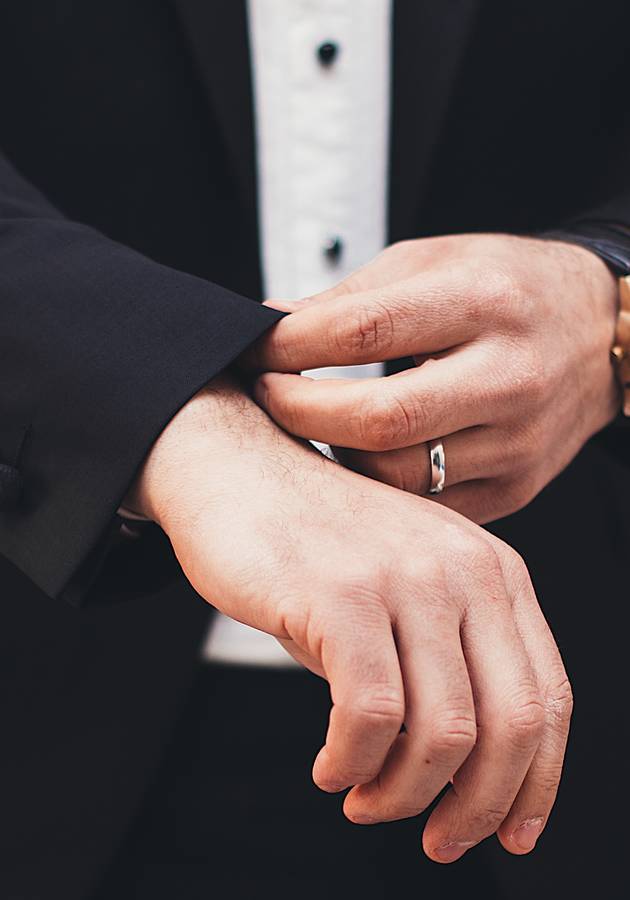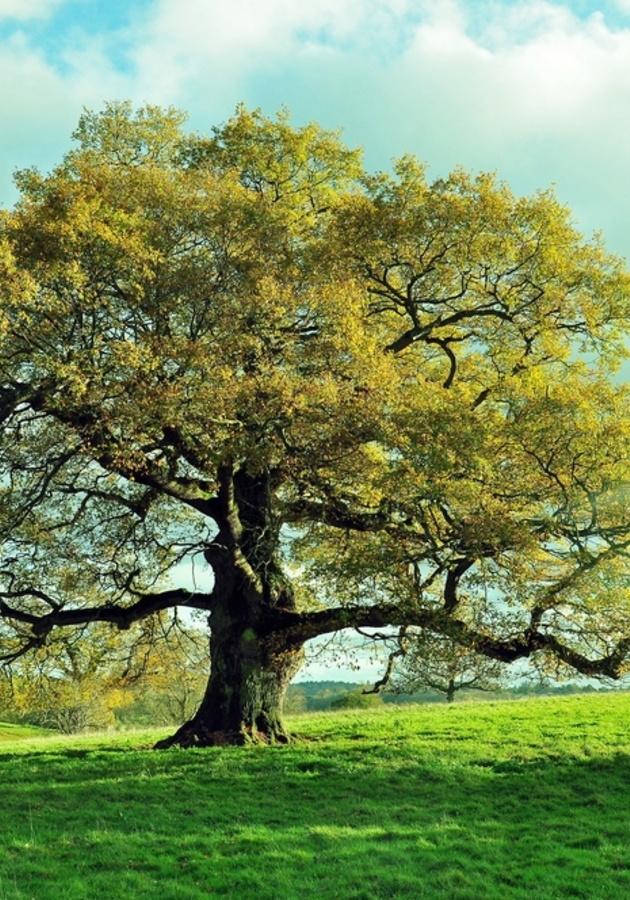The philosopher Daniel Dennett referred to evolution by natural selection – the subject of Darwin’s first great book, “On the Origin of Species” – as “Darwin’s dangerous idea.” In “The Evolution of Beauty,” American ornithologist Richard O. Prum proposes that Darwin’s “really dangerous idea” is the concept of aesthetic evolution by mate choice, explored by Darwin in his second great book, “The Descent of Man.”
“I am convinced that most of those who think of themselves as Darwinians today,” writes Prum, “have gotten Darwin all wrong. The real Darwin has been excised from modern scientific hagiography.” So, get ready to revive, with him, Darwin’s long-neglected theory of sexual selection, and prepare to discover why beauty might be at least as central as adaptation is central to the history of life.
The peacock’s tail: Darwin’s principal evolutionary problem
In the fifth edition of “On the Origin of Species,” Charles Darwin introduced Herbert Spencer’s famous phrase “the survival of the fittest” as an alternative to “natural selection.” Ever since then, people have used this phrase as synonymous with evolution, pointing out that every last trait of all animals on earth must be the direct product of the vicious and undeniable struggle for survival.
And why shouldn’t they? These five words seem to sum up the main mechanism of evolution and, in a single maxim, recap millions of years of progress and speciation. Unquestionably, the survival of the fittest – or, more elaborately, adaptation by natural selection – is one of the most profound, elegant, and beautiful explanations ever proposed.
And yet, Darwin himself found a big, almost-gaping, hole in it. If the point of life is to be “better designed for an immediate, local environment” so that you can survive and leave some offspring – he wondered – then why should numerous animals be so brightly colored and feature so many strange traits that, instead of helping them survive, make them more vulnerable to predators? “The sight of a feather in a peacock’s tail, whenever I gaze at it, makes me sick!” – grappling with this problem, Darwin wrote in a letter sent to Asa Gray on April 3, 1860. Why should such a beautiful thing as a peacock’s tail make anyone sick?
Prum claims that it’s because of “the extravagance of its design seemed of no survival value whatsoever; unlike other heritable features that are the result of natural selection, the peacock’s tail seemed to challenge everything that Darwin had said in ‘Origin.’”
Armament and ornament: Darwin’s exquisite solution
So, 12 years later, in his second-most famous book, “The Descent of Man,” Darwin tried to solve this problem – the problem of impracticable beauty. In this book, Darwin “proposed a second, independent mechanism of evolution – sexual selection – to account for armaments and ornaments, battle and beauty. If the results of natural selection were determined by the differential survival of heritable variations, then the results of sexual selection were determined by their differential sexual success – that is, by those heritable features that contribute to success at obtaining mates.”
Put plainly: sometimes it’s not the fittest, but the most beautiful, that survives. This would explain not only the peacock’s lavish tail, but also the elaborate feathers, exquisite songs, and mating dances of numerous other birds; it should also explain the white backside and legs of the Malaysian Banteng bull; it explains the red buttocks of many monkeys and apes as well.
Darwin proposed that within this second dynamic force of evolution – sexual selection – two distinct and sometimes opposing mechanisms are at work:
- The law of the battle, or “the struggle between individuals of one sex – often male – for sexual control over the individuals of the other sex;” according to Darwin, the battle for sexual control was the main reason why some weapons of aggression (such as horns, antlers, and spurs) and large bodies appeared and evolved.
- The taste for the beautiful, or “the process by which the members of one sex – often female – choose their mates on the basis of their own innate preferences;” it’s nature giving its species a second chance, saying something along the lines of “you better be beautiful if you have no brains or brawn.”
The law of the battle explains the evolution of armament. The taste for the beautiful – the evolution of ornament.
The rejection of Darwin’s theory
Unless you’re an expert in Darwin, the idea of sexual selection might have come as a surprise to you, not the least because it implies that natural selection is not the only driving force behind evolution – as many modern evolutionary biologists seem to state. On the contrary, in fact: as impractical as it has become in the eyes of many, precisely because of Darwin’s theory, beauty might have been regarded as an even more important factor in speciation and survival by Darwin himself.
Why isn’t this part of common knowledge? Well, “blame it on two Victorians and a bunch of neo-Darwinists,” writes Prum.
The first one among these is St. George Mivart, an English biologist and an ardent believer in natural selection for the 15 or so years following the publication of the “Origin.” Mivart had problems specifically with the taste-for-the-beautiful mechanism, mostly because, unlike natural selection, it presupposed “choice, exercised freely.” Also, because he lived in a day and age when it was almost fashionable to be misogynist: “such is the instability of vicious feminine caprice that no constancy of coloration could be produced by its selective actions,” Mivart wrote in a review of Darwin’s “Descent.”
The other one to challenge Darwin’s “sexual selection” was none other than Alfred Russel Wallace, the man who (though largely forgotten by history) devised the theory of evolution concurrently with Darwin. “The only way in which we can account for the observed facts, is by supposing that color and ornament are strictly correlated with health, vigor, and general fitness to survive” – ” wrote Wallace in his 1878 book, “Tropical Nature.”
And this view prevailed in the centuries to come. Most of the neo-Darwinists today believe that the flashiness of a peacock’s tail speaks volumes of the bird’s fitness: “despite this disadvantage,” it supposedly says, “I made it this far!” There’s more to it, says Prum.
Aesthetic evolution by mate choice
An “obsessive birder,” Prum has studied the world of birds for over four decades, and, so far, he has personally seen (and, in many cases, thoroughly examined) about a third of the world’s ten thousand known bird species. His take on Darwin’s notions of “sexual selection” and “mate choice”?
Well, at least as far as birds are concerned, he thinks that “aesthetic evolution has great explanatory power” – in fact, much greater than the power of the “fitness first” model. Prum suggests that accepting his more complicated evolutionary theory ‘rescues us from the tedious and limiting adaptationist insistence on the ubiquitous power of natural selection.’”
He writes: “Aesthetic evolution by mate choice is an idea so dangerous that it had to be laundered out of Darwinism itself in order to preserve the omnipotence of the explanatory power of natural selection. Only when Darwin’s aesthetic view of evolution is restored to the biological and cultural mainstream will we have a science capable of explaining the diversity of beauty in nature.”
In other words, humans don’t find symmetrical faces beautiful because they suggest great fitness; they find them beautiful because beauty itself is an important factor in evolution in itself. Let’s explain how this works a little bit more by revisiting some of the ideas of the British mathematical biologist Ronald Fisher, “the greatest of Darwin’s successors.”
The sexy son hypothesis and Fisherian runaway
In the early 20th century, in an attempt to find an explanation for the evolution of exaggerated male ornamentation, Fisher proposed quite a few theories that necessarily take sexual attractiveness as an evolutionary factor. The most interesting among these are, arguably, “the sexy son hypothesis” and “the Fisherian runaway.”
According to the sexy son hypothesis, a female’s ideal choice for a male partner is the one whose genes could produce a male offspring with the best chances for reproductive success. The result is that “one of the most desirable qualities a male can have in the eyes of a female is, quite simply, sexual attractiveness itself.” It sounds a bit tautological, but it makes sense. Brad Pitt, for example, is not necessarily healthier than most males; he’s just more beautiful than them. Consequently, his children should also be at least beautiful enough to have children themselves. This makes even more sense if you take into consideration Fisher’s most celebrated theory: runaway selection.
Fisher suggested that one didn’t need to choose between Wallace and Darwin: he conjectured that, perhaps, they were both right about animal’s ornamental traits; they just failed to realize that they were talking about two different phases of evolution.
Namely, in the past, females must have preferred more ornamental tails because they had been, at the time, “honest and accurate indices of health, vigor, and survival ability.” In other words, in some ancient generation of peacocks, the more beautiful a tail was, the more fit for survival the male member of the species must have been in comparison to the peacocks whose tails were ordinary; consequently, these were the peacocks that survived and reproduced.
But this is where it gets interesting: with them, the genes contributing to ornamentation survived as well. Precisely because these birds were the “ladies’ choice,” their genes evolved to make their tails even more ornamental so that their male offspring be selected for reproduction by the females as well! In other words, “the very existence of mate choice would unhinge the display trait from its original honest, quality information by creating a new, unpredictable, aesthetically driven evolutionary force: sexual attraction to the trait itself.”
“When the honest indicator trait becomes disconnected from its correlation with quality,” writes Prum, “that doesn’t make the trait any less attractive to a potential mate; it will continue to evolve and to be elaborated merely because it is preferred. In the end, according to the Fisher phase-two model, the force that drives the subsequent evolution of mate choice is mate choice itself. In an exact reversal of the Wallacean view of natural selection as neutralizing sexual selection, arbitrary aesthetic choices (per Darwin) trump choices made for adaptive advantage (per Wallace), because the trait that was originally preferred for some adaptive reason has become a source of attraction in its own right. Once the trait is attractive, its attractiveness and popularity become ends in themselves… Desire for beauty will endure and undermine the desire for truth.”
The two routes of evolution and the queering of homo sapiens
So, unlike most neo-Darwinists, Prum believes that evolution is more than a story about the survival of the fittest. That mechanism, in his opinion, is just one of the two routes of evolution, the one in which predominantly males choose females; but, there’s another, more beautiful, route, the one in which ladies are the ones who choose.
Now, if we simplify a bit, we might say that different species have taken different routes. For example, in the world of gorillas and many duck species, males use threats and force to command exclusivity in their mating access to females; often, they even murder the offspring of their predecessors; this is the route of force, the survival of the fittest at its brawniest.
The aesthetic route works in a much different manner; in this case, one sex respects the opposite sex priorities and tries to appeal to them through certain behaviors and rituals. This second route is, of course, the route of modern humans. In addition to solving Darwin’s principal evolutionary problem, sexual selection seems to explain the appearance of some ostensibly counter-evolutionary behaviors and traits in humans, such as homosexuality, monogamy, female orgasm, paternal care, the shrinkage of all body parts except the brains and the genitalia, permanent breasts, etc. In a way, most of this happened because we select each other primarily via sexual attractiveness, respecting the choice of the other sex. And because, in our case, our choices seem to matter more than those made by nature.
Final Notes
Provocative and groundbreaking, “The Evolution of Beauty” was a Pulitzer Prize finalist and one of the 10 best books of 2017 according to The New York Times.
We believe that it could be debated for many years to come. Read it now – so that you can talk about it with your grandchildren.
12min Tip
Apparently, it’s not only the fittest that survive: the prettiest and the ones capable of producing most beauty have persevered as well. This is why male peacocks have lavish tails, why male manakins dance, and why male bowerbirds build beautiful bowers. So, take a lesson from their books and, if you can’t earn the attraction of the girl of your dreams in any other way, try to dazzle her with your dance moves, a serenade or a poem.





























